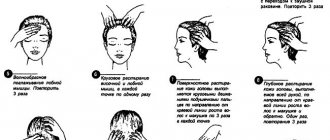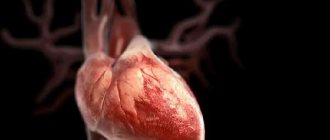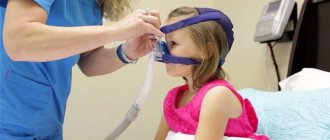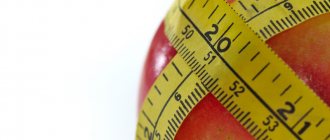Holotropic breathing is a breathing therapy practice based on hyperventilation of the lungs. It helps improve your emotional state and has a meditative effect. It is believed that this helps to get rid of subconscious fears and worries, as well as level out the emotional background.
Scientifically proven: correct breathing method helps speed up metabolism
What is Holotropic Breathwork?
If we break down the term “holotropic” into parts, its origin comes from the Greek words holos (translated: whole, whole) and tropein (leading). When the meanings of the translated terms are combined, the result is “breath leading to wholeness.” This is a type of psychotherapy that works on a person’s personal growth and consists of a special breathing technique that people practice for a certain time while listening to music.
Holotropic breathing triggers a whole chain of chemical reactions in the human body, which leads to changes in the functioning of the nervous system: structures responsible for unconscious processes, long-term memory, and emotions are activated. This is how breathing therapy occurs at a deep level, which frees the individual from long-standing psychological trauma. After a certain time, the patient is transformed and cured of his illness.
Breathwork using holotropic techniques was developed by an American psychologist named Stanislav Grof in the fifties. Twenty years later, when many positive studies had been done, the technique was officially recognized and approved throughout the world as an alternative method. It is used instead of the use of psychotropic drugs and is considered an effective therapy for patients.
The goal of breathwork therapy using holotropic techniques is to heal the individual so that he or she achieves wholeness while descending into one of the deepest levels of consciousness. The basis on which this technique is based is the totality of spiritual and psychological practices throughout the world acquired by humanity over many millennia of existence.
In fact, classes that include this unique technique look like this: rapid, deep, coherent breathing is performed without pauses between inhalation and exhalation; The exercises are accompanied by stimulating rhythmic music. As a result, a person is immersed in an unusual state, during which he receives a stream of unconscious experience. Next, drawing, dancing, and discussion of the ongoing process are connected to the technique.
- How to stop brain aging
- How to get the most out of anti-aging products
- What happens if a pensioner does not pay the loan?
Internal nonverbal experience
A Holotropic Breathwork session is an internal non-verbal experience, without outside interference, except in situations that require assistance from the practitioner.
The practitioner's job is to create a safe space for the breather, to respect the natural flow of the experience and to help in situations where it is necessary, to be responsive and unobtrusive.
During practice, safe conditions are needed that will support the living of internal experience.
Usually the session lasts 2-3 hours, this is the necessary time for the process to reach a natural conclusion.
Holotropic breathing: harm or benefit?
This breathing technique, like medications, has positive and negative effects on human health with side effects, so the opinions of psychotherapists are radically divided. Those who practice holotropic breathing claim that it is the safest way to treat psychological problems. The rest of the experts consider the technique very dangerous for the mental and physical condition of the patient. Here is the negative impact of this breathing technique on human health:
- It is compared to the way a woman breathes during childbirth, an athlete during a sprint race, or a tourist when climbing mountains. As a result, the following happens: the level of carbon dioxide in the tissues increases sharply, which causes hyperventilation of the lungs. These processes are a catalyst for such dangerous reactions as: reflex vasoconstriction, a sharp increase in blood pressure, a decrease in hemoglobin in the blood, and metabolic disorders. A person experiences temporary suffocation of the brain, and the nerve endings gradually begin to die.
- During one breathing exercise using holotropic technique, the human body loses up to three liters of carbon dioxide, which can lead to dizziness and loss of consciousness.
- If you perform such holotropic therapy on your own, without knowing all the features of the correct breathing technique, there is a risk of cerebral edema and death.
- By making even one incorrect manipulation during a breathing exercise using the holotropic technique at home, it is possible to cause irreparable harm to the central nervous system, myocardium, liver, and kidneys.
Psychotherapists who are supporters of the holotropic method of therapeutic breathing hold the opposite opinion. They claim that an absolutely healthy person who has no contraindications and has undergone professional training from Stanislav Grof’s followers in certified centers will receive only positive health effects. Here's how this technique affects the human body:
- Holotropic breathing is considered the fastest-acting technique among other psychotechniques. It leads to rapid personal changes. This happens because during a holotropic session, not each traumatic situation from the past is considered separately, but a whole generalizing block.
- Your internal system of the body itself chooses which psychological problem should be considered at the moment, thanks to which a specialist psychologist does not manipulate your consciousness (unlike other areas of psychotherapy). This is called the non-manipulative feature of holotropic technique.
- Breathing, on which this technique is based, helps to work through the deepest particles of the negative psychological experience received during the lesson.
- Thanks to classes using holotropic techniques, a person, while breathing, becomes aware of the roots of his psychological stress and is freed from them.
- The holotropic breathing technique effectively treats psychosomatic diseases (pathologies caused by a person’s negative psychological state) even in the most hopeless cases.
- The patient can easily overcome bad habits and addiction by attending classes based on rapid breathing.
- By performing the exercises of their holotropic technique, a person almost immediately gets rid of the consequences of chronic stress and fatigue, and a sense of inner harmony returns to him.
Validity of criticism
You are probably interested in the latest trends in the topic of psychotraining and know about the growing offer of assistance in the treatment of stress using various breathing exercises and practices. The holotropic breathing technique is one of the most popular in its niche. However, the attitude of specialists towards it is controversial and is divided into two opposing camps: if some see in this practice the possibility of internal liberation and a good springboard for the development of empathy, then others look out for negative side effects and the dubiousness of the result.
In terms of critical condemnation of this therapeutic approach, one can refer to the opinion about the probable hypoxia of nerve cells caused by both the duration of the procedure and the inability of the mentor to competently accompany this process. Therefore, before starting the practice of holotropic breathing, it is important to select an assistant who has some positive experience in this area.
The right approach to the matter will allow you to achieve the desired result, helping to cleanse yourself of internal emotional debris and making it easier for specialists to return you to a normal life without complexes and negativity.
What else is holotropic breathing used for?
The holotropic technique with unique breathing cannot be considered a panacea for all ills and illnesses of people, but its use still has a positive effect in many cases. The use of such breathing psychotherapy is so widespread that it is compared to the infinite possibilities of human consciousness. Holotropic breathing is successfully used not only for the treatment of psychological pathologies. It is effective in the fight against excess weight; works well during drug or alcohol addiction therapy. How this breathing technique works to treat certain problems:
- For weight loss. During the application of breathing used in holotropic therapy, hyperventilation occurs. A huge amount of oxygen enters the body, which promotes the effective burning of fat cells. As a result of such breathing, metabolic processes are accelerated, and this helps cleanse the body of harmful substances and toxins.
- For the treatment of alcoholism. Holotropic breathing technique has a therapeutic effect for patients suffering from alcohol addiction. When using it, a person plunges into the depths of his consciousness and faces the negative experience that led him to this problem. The patient experiences this situation in his head in a new way, gains awareness and heals from the previous trauma. The need for alcohol doping disappears, which allows you to successfully overcome addiction.
How does a group session work?
To perform breathing using the holotropic technique, appropriate conditions are created in specialized centers that are aimed at relaxing a person and liberating him from negative experiences. This is achieved by fulfilling simple requirements that are necessary for classes:
- A group session using holotropic breathing techniques takes place in the form of seminars, the number of which depends on the individual problems of each visitor (from 8 to 15 sessions).
- The duration of one lesson can vary from three to eight hours.
- Participants are divided into pairs: one will play the role of a sitter (an assistant who ensures the safety of the person doing the breathing), and the other will play the role of a holonaut (the breather).
- The lesson begins with relaxation and relaxation accompanied by specially selected rhythmic music (it helps to maintain heart and respiratory rhythms).
- When the main stage of the breathing session comes to an end, all participants begin to express their emotions creatively: they draw, dance freely, and sculpt fancy figures from clay. If they want, they can discuss everything they experienced during these hours.
- The lesson is accompanied by specially selected music (read more about it below).
- Procedure for replacing licenses for older drivers
- What is an anti-wrinkle patch and how does it help?
- Law on silence in new buildings in Russia
Choosing the right music for practice
A musical composition for classes should be composed according to a certain principle. The entire session should proceed to the sounds of melodies, allowing at each stage of the session a smooth transition to the next level of active breathing.
The following special melodies must be selected for each time interval of the session:
- Light stimulating music (1-8 min.) - setting up intense breathing.
- Invigorating melody sounds (8-20 min.) - stimulating holotropic breathing.
- Ethnic music with a drum rhythm (20-40 min.) is an active motivation for a breakthrough.
- Dramatic music of a breakthrough nature (40-80 min.) - the culminating stage of the classes.
- Pleasant melodic sounds (80-95 min.) - end of the session.
For the rest of the time, after an hour and a half from the start of the session, a creative melody should be played, allowing you to get out of the trance state. The holonaut should feel the altered consciousness accompanied by a meditative melody of a calm nature, allowing the holonaut to feel his inner world. All melodies from the beginning to the final stage should be played one by one.
Is it possible to master this technique on your own?
If you have clearly decided for yourself that you are capable of engaging in this method of self-knowledge, and have a great desire, at home, independently mastering the holotropic technique with a certain method of breathing is possible. Thanks to online resources, specialized literature, and various video lessons, you have a unique opportunity to conduct classes effectively. Read on to learn about the holotropic rapid breathing technique that you can practice at home on your own.
Holotropic breathing technique at home
When doing home exercises using holotropic techniques, the disadvantage for the fullness of the session is the absence of a sitter. If a novice trainee has the opportunity to secure a pair for himself, that’s ideal. The inability to perform an activity with a “nanny” cannot be an obstacle to the use of this technique. Here are some important tips for practicing at home using Holotropic Breathwork:
- Before the session, choose a comfortable room for your lesson, having previously ventilated it.
- Stock up on suitable music (for more details on this, see a separate paragraph below).
- Determine for yourself what specific problem you want to solve with the help of holotropic therapy with rapid breathing (personal or family, for example). You must breathe to achieve a specific effect, not for the sake of the process itself.
- Take as deep, frequent breaths as possible, and do not pause your breathing. Additional special recommendations are not needed here; this is a non-verbal technique, which consists of minimal intervention during the lesson. In some ways it can be compared to meditation.
- Use different body positions that your mind dictates.
- After experiencing an emotional experience, engage in your favorite creative process, for example, drawing images you see, dancing, modeling from clay or plasticine.
- You must become aware of the emotions you have experienced.
What kind of music is needed?
Choose music that is conducive to relaxation: sounds of nature, tambourine, drum roll. It will be better if you choose different music selections for each stage. First there should be a stimulating and motivating melody, then a dramatic one mixed with a dynamic one. At the end there should be a musical breakthrough with a transition to calmer, meditative music. Check out the step-by-step description of the musical accompaniment of the entire holotropic technique session:
- For the first 8 seconds of the lesson, light music should sound, encouraging and stimulating breathing.
- Before 20 seconds into class, record an even more breathing-stimulating melody.
- For the next 20 seconds of the holotropic session, an ethnic recording should be played using drumming.
- Afterwards, the intensity of the breathing exercise with holotropic technique is replaced by a trance state, so a dramatic melody should sound for the next 35 seconds.
- Then the drama subsides, and the style of musical accompaniment is replaced by heartfelt, warm music. This lasts for the next 15 seconds of the holotropic breathing session.
- Afterwards, the melody should smoothly turn into a calm one, but maintain intensity. This rhythm should be maintained until the very end of the holotropic breathing session.
How to choose the right device for non-invasive ventilation at home
Entrust the solution to this difficult and very important task to professionals. A doctor will help you decide on the model of non-invasive ventilation device for home:
- specializing in this area;
- knowledgeable about the technical characteristics of specific devices;
- having practical experience in individually adjusting the interface and setting up the non-invasive ventilation mode for home use, taking into account the anatomical and physiological characteristics of the patient and his diagnosis.
By turning to specialists for help, you can:
- Consult an expert doctor who works with ResMed equipment.
We cooperate with pulmonologists, somnologists, resuscitators, neonatologists and other certified specialists who treat patients with breathing disorders. - Purchase an original device with the required characteristics without intermediary markups
- the price of any ventilator model for home use is minimal and is determined by the manufacturer. - Receive guarantees of trouble-free operation of the device.
We are the only official distributor of ResMed in the Russian Federation; all our employees have undergone special training and have appropriate certificates. This will allow you to buy a device after preliminary professional testing and preparation, with warranty and post-warranty service support.
Medical contraindications for use
Before performing breathing exercises, you need to find out if you have any medical contraindications to the use of this technique. There are many contraindications to practicing this type of breathing. Check out the detailed list of diseases/indications, the presence of which prohibits holotropic therapy:
- In the process of conducting a lesson on rapid breathing, a person may experience emotional outbursts, stress, and physically feel his experiences (through an increase in body temperature, for example). For those who suffer from angina, hypertension, heart failure, asthma - all this is very dangerous and can be fatal.
- Pregnancy. This can lead to the death of the fetus in the womb.
- Classes using holotropic therapy are not indicated if a person suffers from epilepsy. The use of this technique increases the risk of a seizure from the received emotions.
- Do not practice holotropic techniques if you have recently undergone surgery or any trauma. Vigorous breathing exercises can cause the stitches to tear.
- Classes based on the holotropic technique are contraindicated during the acute stage of infectious diseases.
- Children under 14 years of age are not allowed to attend such sessions.
Types of breathing exercises
Today, many different breathing techniques and breathing exercises are practiced, such as gymnastics by Strelnikova, Korpan, Buteyko, Muller, for weight loss, when doing yoga, and so on. It is better to check with a specialist or your doctor which one is right for you.
There are three types of breathing practices:
- static, in which exercises are performed in a stationary state;
- dynamic, in which exercises are performed in motion;
- drainage, in which sputum is discharged
Helpful breathing exercises for older people
Correct cough technique
It is used for difficulty coughing and poor sputum discharge. You need to start this exercise after suffering a respiratory illness. Its essence is to make the coughing process productive. You need to pick up a pillow and press it to your stomach while coughing. At this time, you help your body cough, the process of breaking down the cough occurs. The abdominal muscles work, and sputum leaves the bronchopulmonary organs more easily. It is recommended to perform this technique 3 times a day, 5-7 days.
Diaphragmatic breathing
The muscle that separates the chest cavity from the abdominal cavity is called the diaphragm. It is very important to strengthen the diaphragm to normalize the entire respiratory process.
First you need to take a lying position or sit on a chair with a high back, put your hands on your stomach and slowly inhale air. The stomach should inflate, the chest should remain motionless. You need to inhale through your nose. Then you need to exhale just as slowly, but through your mouth. You need to form your lips into a tube, as if you are blowing out a candle, and pull your stomach in as much as possible. This exercise is performed for 5 breaths, several times a day.
Reduction of the shoulder blades
This exercise allows you to breathe more deeply and productively and helps straighten your ribs. Lie on your back or sit on a high-backed chair and extend your arms along your body. If you perform the exercise lying on your back, then turn your palms up. Slowly bring your shoulder blades together and then lower them down, your chest moving forward a little. Inhale smoothly through your nose and exhale through pursed lips. Take breaks of 1-2 seconds between breaths. Take 5 productive breaths.
Chest muscle stretch
Stretching the muscles of the chest allows you to increase the level of oxygen in the body and promotes unhindered air circulation in the lungs. You can perform it while lying on the bed or sitting on a chair. First, we bring our shoulder blades together and lower them down, then we raise our hands, clasped in a lock, above our heads. Inhale deeply through your nose. You need to exhale through your mouth, slowly lowering your arms. Do this 5 times. The oxygen level in the body will increase significantly.
Fast breathing
The technique is aimed at strengthening the diaphragm and allowing you to inhale a larger volume of air. You can perform this exercise in any comfortable position, sitting or lying down. Draw air into your lungs through your nose, and then take three more quick, shallow breaths. Exhale slowly through pursed lips. Take a break for 1-2 seconds and repeat. It is recommended to take 3-4 such breaths.
Deep breathing
This technique aims to increase oxygen levels in the body. Sit comfortably on a high-backed chair. Take a deep breath through your nose for 4 seconds, then hold your breath for 8 seconds, and then exhale slowly for 8 seconds through pursed lips. Take a break of 1-2 seconds and inhale 2 more times.
Shoulder rotation
Rotating your shoulders stretches the pectoral and shoulder muscles, which shorten with age. Take any comfortable position, sitting or standing, lower your arms along your body and slowly begin to rotate your shoulders in a circle, first clockwise and then counterclockwise. If you can’t immediately rotate, you can move your shoulders forward, up, back, down. Perform 5 rotations in one direction and 5 rotations in the other direction. Start with small circles, gradually increasing the radius of rotation.
There are definitely significant benefits from performing breathing exercises, but we strongly recommend that you discuss all exercises with your doctor and listen to your body during exercise. Be healthy and breathe deeply!
Video lesson: How to learn to breathe correctly
If you want to use holotropic techniques effectively, it is important to learn how to breathe correctly. Otherwise, it will not only have no effect during therapy, but may even lead to huge health problems and irreversible processes in the body with a fatal outcome. Check out a comprehensive video tutorial below that teaches proper breathing techniques during a holotropic session. This way you will learn many useful recommendations and instructions that will help you get the healing effect from using this method.









